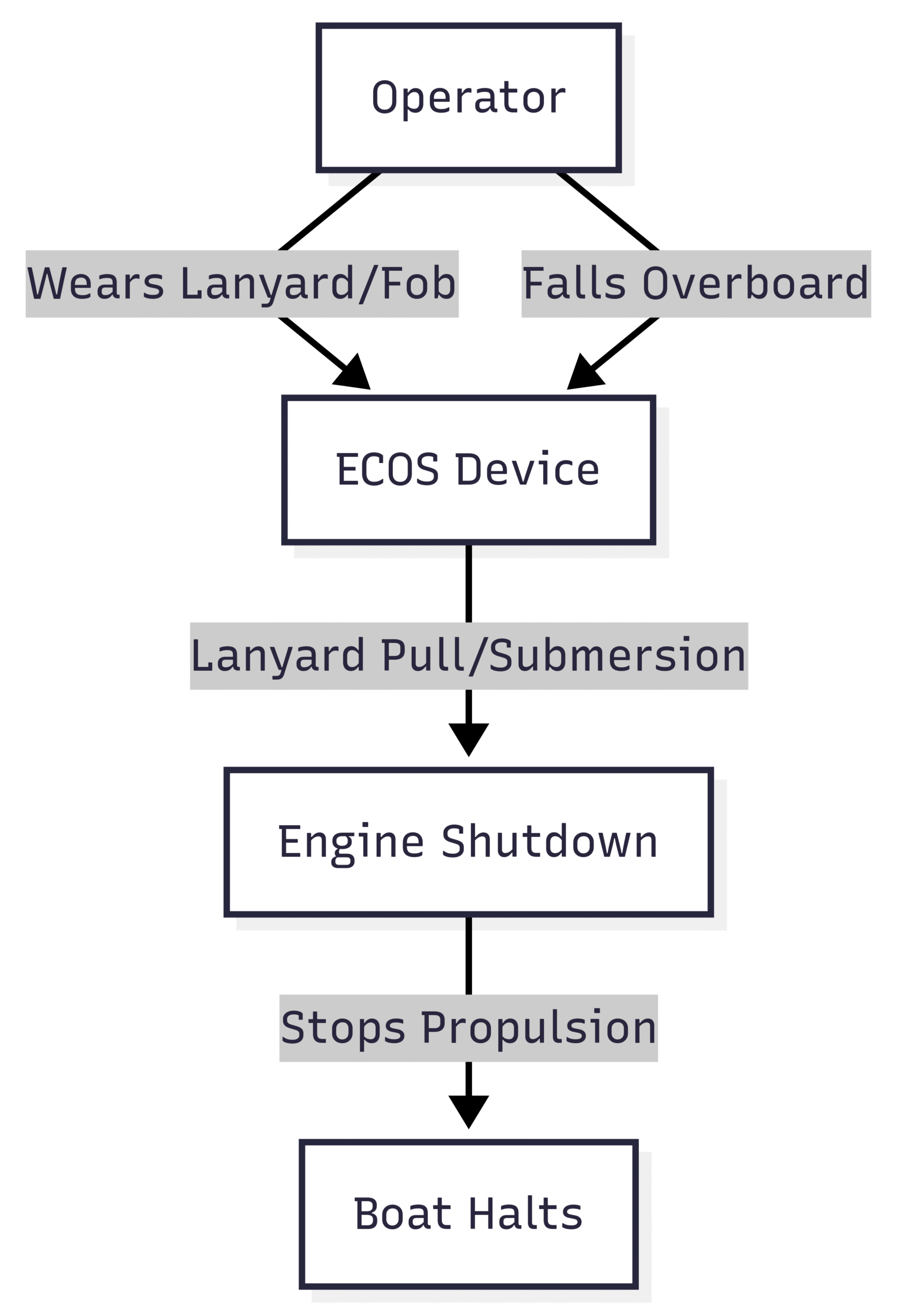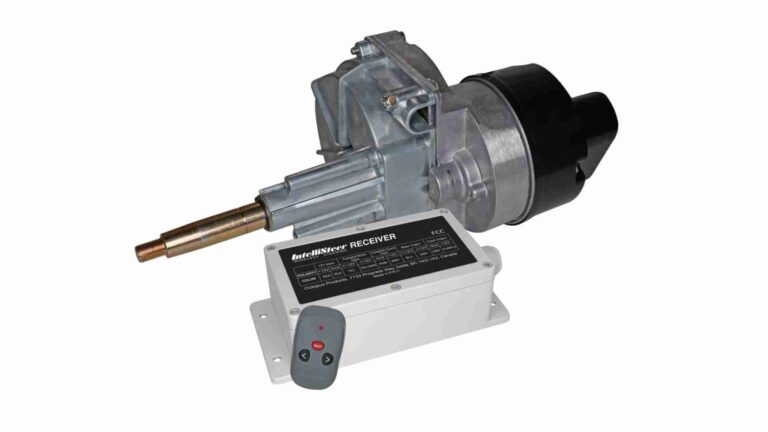Boat Engine Cut-Off Switch (ECOS)
Learn about Boat Engine Cut-Off Switches (ECOS): safety benefits, regulations, types, and how they prevent accidents. Essential guide for boaters.
Boating offers freedom and adventure, but safety remains paramount. One critical device ensuring boater safety is the Engine Cut-Off Switch (ECOS), commonly known as a “kill switch.” This small but vital tool can prevent catastrophic accidents, such as runaway boats or propeller strikes, by stopping the engine when the operator is separated from the helm. This guide explores the functionality, regulations, benefits, and types of ECOS, providing boaters with essential knowledge to stay safe and compliant.
What is an Engine Cut-Off Switch (ECOS)?
An ECOS is a safety mechanism installed on recreational powerboats and personal watercraft (PWC) to halt the engine if the operator is unexpectedly displaced from the helm. Displacement can occur due to falling overboard, being ejected by a wave, or stepping away from the controls. By stopping the engine, the ECOS prevents the boat from continuing uncontrolled, reducing risks to the operator, passengers, and others on the water.
How Does an ECOS Work?
The ECOS operates through a connection between the operator and the boat’s engine. The most common setup involves a lanyard-based system:
- Lanyard Connection: A coiled or straight lanyard attaches to the operator via a clip, typically secured to a life jacket, belt loop, or clothing.
- Switch Activation: The lanyard’s other end connects to a C-shaped clip or switch at the helm, often near the ignition. If the operator moves far enough to apply tension, the lanyard pulls the clip, triggering the switch.
- Engine Shutdown: The triggered switch cuts power to the engine, stopping the boat’s propulsion.
Alternatively, wireless ECOS systems use electronic fobs or bracelets. These devices communicate with a helm unit and activate the shutdown if the fob is submerged or moves out of range, offering freedom of movement without a physical tether.

Why ECOS Matters: The Safety Imperative
Uncontrolled boats pose severe dangers, including:
- Propeller Strikes: A typical three-blade propeller at 3,200 RPM can deliver 160 impacts per second, causing life-threatening injuries.
- Circle of Death: A runaway boat may circle at high speed, endangering the ejected operator or others in its path.
- Collisions: Uncontrolled vessels can collide with other boats, swimmers, or structures.
ECOS mitigates these risks by ensuring the boat stops when the operator is no longer in control. The U.S. Coast Guard reports numerous incidents annually where operators are ejected, leading to injuries or fatalities. ECOS provides a critical safety net, particularly on small, open boats where ejection risks are higher.
Real-World Impact
Consider a scenario: A boater operating a 20-foot speedboat hits a wave, ejecting them overboard. Without an ECOS, the boat continues at 30 knots, circling dangerously near the operator. With an ECOS lanyard attached, the engine stops, allowing the operator to swim to the drifting boat safely. This simple device can mean the difference between a minor incident and a tragedy.
Federal Regulations Governing ECOS Use
Since April 1, 2021, a federal law mandates ECOS use for operators of recreational vessels under 26 feet with engines producing 115 pounds of static thrust (approximately 3 horsepower) or more. This law, part of the Coast Guard Authorization Acts of 2018 and 2020, applies to all federally navigable waterways.
Key Regulatory Requirements
- Operator Responsibility: Operators must use an ECOS link (ECOSL) when the boat is on plane or above displacement speed.
- Vessel Requirements: Boats manufactured after December 2019 must have a factory-installed ECOS, and owners must maintain it in working condition.
- Exemptions:
- Boats with enclosed cabins.
- Vessels operating at low speeds (e.g., docking, trolling, or in no-wake zones).
- Engines producing less than 115 pounds of thrust.
State Laws
Seven states—Alabama, Arkansas, Illinois, Louisiana, Nevada, New Jersey, and Texas—enforce their own ECOS laws, often aligning with federal requirements. Additionally, 44 states mandate ECOS use for PWCs. Boaters should check local regulations via the U.S. Coast Guard’s interactive state boating laws map.
| State | ECOS Law for Recreational Boats | ECOS Law for PWCs |
|---|---|---|
| Alabama | Yes | Yes |
| Arkansas | Yes | Yes |
| Illinois | Yes | Yes |
| Louisiana | Yes | Yes |
| Nevada | Yes | Yes |
| New Jersey | Yes | Yes |
| Texas | Yes | Yes |
| California | No | Yes |
| Florida | No | Yes |
Types of ECOS Devices
ECOS technology has evolved, offering options to suit different boating needs. Below are the primary types:
1. Lanyard-Based ECOS
Description: A physical lanyard connects the operator to a helm-mounted switch.
- Pros:
- Affordable (typically $10–$30).
- Simple to install and use.
- Reliable with no battery dependency.
- Cons:
- Restricts operator movement.
- Can be forgotten or improperly attached.
2. Wireless ECOS
Description: Uses a fob or bracelet that communicates wirelessly with the helm unit, activating if submerged or out of range.
- Pros:
- Greater freedom of movement.
- Ideal for larger boats or active operators.
- Some models support multiple users.
- Cons:
- Higher cost ($100–$500).
- Requires batteries or charging.
- May need professional installation.
Comparison Table
| Feature | Lanyard-Based ECOS | Wireless ECOS |
|---|---|---|
| Cost | $10–$30 | $100–$500 |
| Installation | DIY | Professional |
| Movement Freedom | Limited | High |
| Battery Requirement | No | Yes |
| Reliability | High | Moderate |
| Best For | Small boats, PWCs | Larger boats |
Choosing the Right ECOS for Your Boat
Selecting an ECOS depends on your boat type, budget, and operational needs:
- Small Boats and PWCs: Lanyard-based systems are cost-effective and meet federal requirements.
- Larger Open Boats: Wireless systems offer flexibility for operators moving around the deck.
- Budget Constraints: Standard lanyard systems are widely available and inexpensive.
- Tech-Savvy Boaters: Wireless ECOS with advanced features (e.g., multi-user support) may appeal.
Popular brands include Fell Marine, Autotether, and Mercury Marine, offering both lanyard and wireless options. Prices vary, with wireless systems like Fell Marine’s MOB+ costing $200–$300, while lanyard kits are often under $20.
Installation and Maintenance
Installation
- Lanyard ECOS: Typically pre-installed on boats or easily added with basic tools. Connect the switch to the ignition circuit per manufacturer instructions.
- Wireless ECOS: May require professional installation, especially for integrating with modern engine systems.
Maintenance Tips
- Regular Inspections: Check lanyards for fraying and switches for corrosion monthly.
- Test Functionality: Pull the lanyard or submerge the fob to ensure the engine stops.
- Battery Checks: Replace or recharge wireless fob batteries as recommended.
- Follow Manufacturer Guidelines: Adhere to specific maintenance schedules for your ECOS model.
Best Practices for ECOS Use
To maximize safety, follow these guidelines:
- Always Wear the ECOSL: Attach the lanyard or carry the fob before starting the engine.
- Educate Passengers: Inform others about ECOS operation and propeller hazards.
- Check Before Starting: Ensure the ECOS is connected and functional.
- Avoid Risky Behaviors: Prohibit riding on bow, gunwales, or transom to reduce ejection risks.
- Child Safety: Supervise children closely and establish clear rules for swim platforms and ladders.
ECOS and Propeller Safety
Propeller strikes are a leading cause of boating injuries. ECOS complements other propeller safety measures, such as:
- Propeller Guards: Devices that shield the propeller, tested per the American Boat and Yacht Council’s protocols.
- Awareness: Always account for swimmers before starting the engine and avoid congested areas.
- Recovery Procedures: If someone falls overboard, stop the boat, circle forward to approach, and never use reverse near swimmers.
Industry Trends and Innovations
Boat manufacturers have embraced ECOS technology, with many installing systems as standard since the 2018 mandate. Innovations include:
- Integrated Systems: Modern boats feature ECOS built into digital dashboards.
- Multi-User Wireless: Systems like Autotether allow multiple fobs for crew safety.
- Smart Alerts: Some wireless ECOS notify operators of low battery or connectivity issues.
Common FAQs
Do I need an ECOS on my boat?
Can I use a wireless ECOS instead of a lanyard?
What if my boat was built before 2019?
Conclusion
The Boat Engine Cut-Off Switch is a non-negotiable safety feature for recreational boating. By stopping the engine when the operator is displaced, ECOS prevents dangerous runaway scenarios and propeller strikes. Federal and state laws underscore its importance, mandating use on most boats under 26 feet. Whether choosing a lanyard or wireless system, boaters must prioritize ECOS use, maintenance, and education to ensure safety on the water. Equip your boat, wear the link, and boat responsibly—your life and others’ may depend on it.
Happy Boating!
Share Boat Engine Cut-Off Switch (ECOS): Understanding the Basics with your friends and leave a comment below with your thoughts.
Read National Safe Boating Week: 10 Tips for a Safe Voyage until we meet in the next article.







As someone who loves spending time on the water, the Boat Engine Cut-Off Switch is an absolute must-have! The lanyard-based system is simple to use, and it provides peace of mind knowing the engine will shut off if you fall overboard. I recently upgraded to a wireless model for extra flexibility, and I couldn’t be happier with the results. Great product at a solid price for anyone boating regularly.